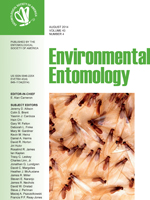Microbial symbionts played a central role in insect evolution. Oreina cacaliae (Schrank, 1785) (Coleoptera: Chrysomelidae) is a rare example of a viviparous insect, able to feed on toxic plants and sequester toxic compounds. In the current study, the microbiota associated with O. cacaliae was characterized using a culture-independent approach, targeting the 16S rRNA bacterial gene. The obtained 16S rRNA gene sequences were analyzed and identified at different taxonomic levels. Wolbachia was the dominant bacterium, both in male and female (100 and 91.9%, respectively) individuals; the detected Wolbachia was described as a new sequence type based on multilocus sequence typing (Wolbachia ST375 Ocac_A_wVdO). After phylogenetic analyses, Wolbachia ST375 Ocac_A_wVdO was attributed to the supergroup A. Immunofluorescence assays and electron microscopy confirmed the presence of Wolbachia within O. cacaliae oocytes, confirming its transovarial transmission in this species. Representatives of six species of Oreina were tested for the presence of Wolbachia through specific polymerase chain reaction, and a dendrogram was generated for these species based on coxI gene sequences. The Wolbachia harbored by different species of Oreina were characterized by multilocus sequence typing. Five out of the six examined Oreina species were positive for Wolbachia, with four of these harboring the same sequence type.
How to translate text using browser tools
1 August 2014
A New Strain of Wolbachia in an Alpine Population of the Viviparous Oreina cacaliae (Coleoptera: Chrysomelidae)
Matteo Montagna,
Bessem Chouaia,
Luciano Sacchi,
Daniele Porretta,
Elena Martin,
Annamaria Giorgi,
Giuseppe Carlo Lozzia,
Sara Epis
ACCESS THE FULL ARTICLE
It is not available for individual sale.
This article is only available to subscribers.
It is not available for individual sale.
It is not available for individual sale.

Environmental Entomology
Vol. 43 • No. 4
August 2014
Vol. 43 • No. 4
August 2014
16S rRNA
insect symbiosis
Leaf beetle
microbiota
reproductive strategy




